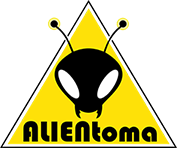| Publication Type: | Journal Article |
| Year of Publication: | 2015 |
| Authors: | R. Wang, Aylwin, R., Barwell, L., Chen, X. Y., Chen, Y., Chou, L. S., Cobb, J., Collette, D., Craine, L., Giblin-Davis, R. M., Ghana, S., Harper, M., Harrison, R. D., McPherson, J. R., Peng, Y. Q., Pereira, R. A. S., Reyes-Betancort, A., Rodriguez, L. J. V., Strange, E., van Noort, S., Yang, H. W., Yu, H., Compton, S. G. |
| Journal: | Insect Conservation and Diversity |
| Volume: | 8 |
| Pagination: | 322-336 |
| Keywords: | Agaonidae, biocontrol, community structure, dispersal, invasive species, Parasitoid |
| Abstract: | 1. The transportation of plants and insects between countries often has negative consequences, but also provides opportunities to study community processes. Fig trees are a species-rich group of largely tropical and subtropical plants, characterised by their unusual inflorescences (figs). 2. Ficus microcarpa is a native of Asia and Australasia and frequently planted elsewhere. Widespread introductions of its pollinator fig wasp,Eupristina verticillata, have allowed the tree to reproduce and become increasingly invasive. Non-pollinating fig wasps (NPFW) are also widely introduced. 3. Here, we combine previously published records of the distributions of fig wasps associated with F. microcarpa with the results of our extensive surveys across much of its introduced and native ranges. At least 43 morpho-species of fig wasps are associated with figs of F. microcarpa, most of which have only been recorded from this host. Twenty-one NPFW have become established outside their native ranges, but there has been only limited colonisation by locally native fig wasps within countries of introduction. 4. Fig wasp communities in colonised areas are less species-rich and contain a lower proportion of parasitoids. The pollinator and two phytophagous NPFW are the most widely introduced species, and usually the first species to arrive in countries where the host fig has become established. The pace of colonisation appears to be accelerating. 5. The rarity of faunal acquisition on introduced F. microcarpa contrasts strongly with that of introduced gall wasps on oaks and chestnuts. |
| DOI: | 10.1111/icad.12111 |
